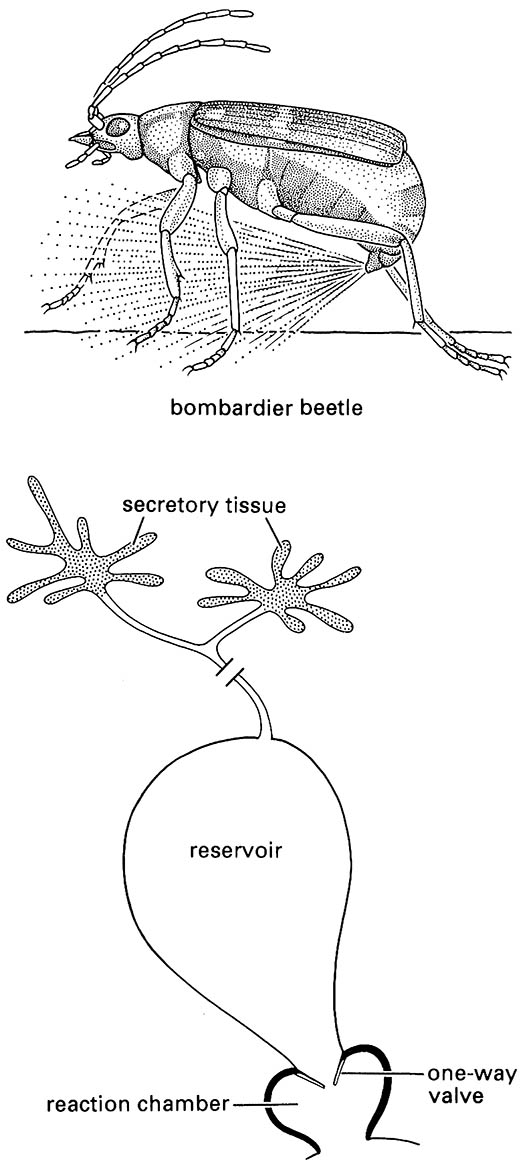Box 14.4. Insect binary chemical weapons
The common name of bombardier beetles (Carabidae: including genus Brachinus) derives from observations of early naturalists that the beetles released volatile defensive chemicals that appeared like a puff of smoke, accompanied by a “popping” noise resembling gunfire. The spray, released from the anus and able to be directed by the mobile tip of the abdomen, contains p-benzoquinone, a deterrent of vertebrate and invertebrate predators. This chemical is not stored, but when required is produced explosively from components held in paired glands. Each gland is double, compris- ing a muscular-walled compressible inner chamber containing a reservoir of hydroquinones and hydrogen peroxide, and a thick-walled outer chamber containing oxidative enzymes. When threatened, the beetle contracts the reservoir, and releases the contents through the newly opened inlet valve into the reaction chamber. Here an exothermic reaction takes place, resulting in the liberation of p-benzoquinone at a temperature of 100°C.
Studies on a Kenyan bombardier beetle, Stenaptinus insignis (illustrated here, after Dean et al. 1990) showed that the discharge is pulsed: the explosive chemical oxidation produces a build-up of pressure in the reaction chamber, which closes the one-way valve from the reservoir, thereby forcing discharge of the contents through the anus (as shown by the beetle directing its spray at an antagonist in front of it). This relieves the pressure, allowing the valve to open, permitting refilling of the reaction chamber from the reservoir (which remains under muscle pressure). Thus, the explosive cycle continues. By this mechanism a high-intensity pulsed jet is produced by the chemical reaction, rather than requiring extreme muscle pressure. Humans discovered the principles independently and applied them to engineering (as pulse jet propulsion) some millions of years after the bombardier beetles developed the technique!




